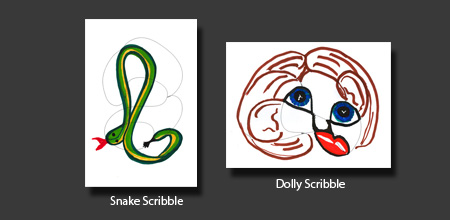Jenny Scribble Snake and KC Scribble Face
What we “see” objectively can often change very quickly. We recently ran a workshop at Montgomery County Government with Building Site Inspectors. We had made a powerpoint on a simple white slide template and, because the facility did not have a screen on which to project the powerpoint, we projected it onto the wall made of grey cloth paneling. When we asked the group to identify the background color of the powerpoint slide, several spontaneously declared “white!” but then corrected themselves and dubiously said “at least I think it’s supposed to be white…but it actually looks light blue.” They quickly understood that their assumption had led them to “see” what they presumed.
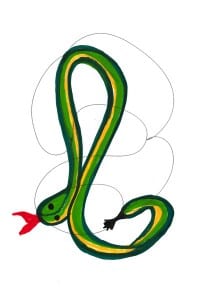
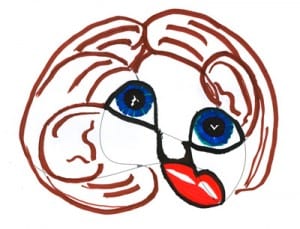
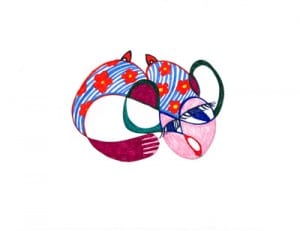
These drawings were made by different people starting with the same scribble outline. The artists were given paper with a scribble drawn on it and encouraged to find and develop an image (or multiple images) from the scribble, a technique that is often used in art therapy to loosen people up and inspire their imagination (usually they are encouraged to use their own scribble as the inspiration). All of the artists saw dramatically different images and their final pictures show the unique directions they went.
One of the things that we love about art is that it can so easily and graphically illustrate our different perceptions, as these drawings so beautifully show. In art therapy, we might go further and encourage people to look at their drawings from different viewpoints–hold them up, step back, squint so that they see things slightly out of focus which amplifies larger and more pronounced areas and shapes. In groups, they might also get others’ responses to their drawings. Those observations are often surprising and eye-opening. Invariably, by the end of this process, they “see” their image completely differently.
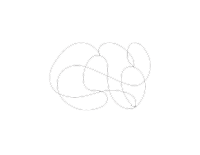
Art Directive:
We invite you to respond to the same scribble drawing that was used in these examples (Download the PDF) and, if you would like, post it below or to our facebook page.
You can also make your own scribble drawing:
1. Choose drawing paper upon which you would like to make your image and media with which you would like to work (markers, pencils, paints). ).
2. For the scribble, use a pencil or light marker so that the line will be softer. Randomly scribble lines on a piece of drawing paper (sometimes people start by actually making sweeping motions in space with their arm to warm up). When you begin to scribble, some recommend that you make a continuous line without lifting your pen or pencil, doing so until there are enough lines to create interest but not be too complicated.
3. You may want to experiment with a couple of scribbles on different sheets of paper. When you’ve chosen one to work with, hold the scribble at different angles until you see some form(s) or shape(s) that make a picture.
4. Use any materials (markers, pencils, paints) to develop that picture. Add any lines or colors that are help build the image. You can stay in the lines of the scribble or go out of the lines, wherever your imagination and hand take you! Enjoy!
This technique is attributed originally to two different sources. In the 50s, British psychologist Donald Winnicott began incorporating scribbles in his work with children as a means of establishing relationship with them. He also determined that these scribble drawings gave him valuable insight into his clients. At around the same time artist Florence Cane used them in her work with special needs children to encourage spontaneity. Her sister, pioneer art therapist Margaret Naumburg, adopted the technique in her work as a means to draw out and explore unconscious material.
